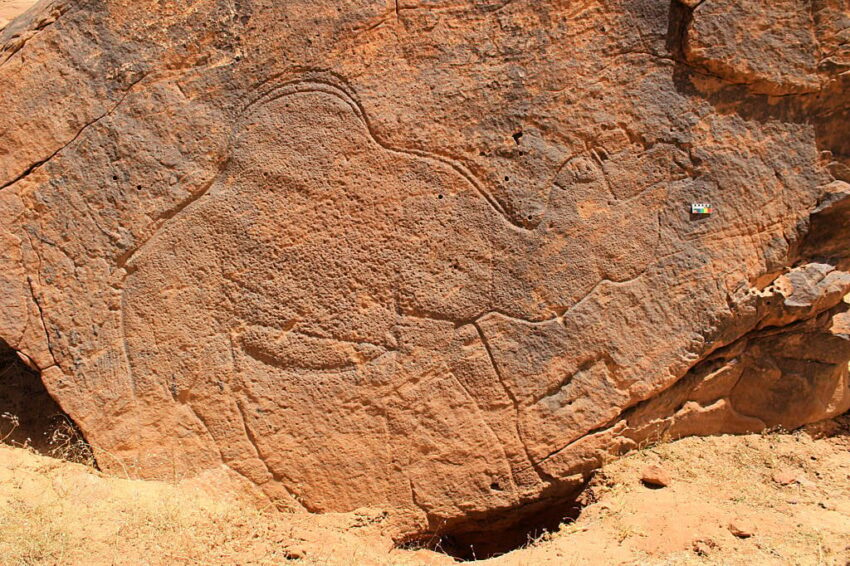Researchers have discovered life-size rock carvings of camels, gazelles, and other animals in the Saudi Arabian desert. These remarkable carvings date back approximately 12,000 years, with many measuring more than 6 feet (1.8 meters) tall.
Scientists believe the carvings were created using a wedge-shaped rock to produce sharp, precise lines. Interestingly, several of these artworks were etched on narrow ledges, preventing the artists from stepping back to view their work while engraving. “To engrave that much detail with just a rock takes real skill,” said Maria Guagnin, an archaeologist with the Max Planck Institute of Geoanthropology in Germany who participated in the discovery.
The animal carvings, along with engraving tools found at the site, indicate that people inhabited the area about 2,000 years earlier than previously thought. However, it remains unclear how they survived in such arid conditions. Researchers speculate they might have lived off shallow lakes that collected water seasonally or drank from water that accumulated in deep crevices.
“People have been creating rock art in Saudi Arabia for thousands of years,” Ms. Guagnin explained. Yet, dating older engravings can be challenging because these artworks rarely feature writing or contain remnants such as charcoal that can be analyzed in laboratories.
Michael Harrower, an archaeologist at Johns Hopkins University who was not involved in the research, commented via email, “We know relatively little about art in the Middle East during this very ancient period of human history.”
A key aspect of the latest discovery was finding a rock pick tool buried directly beneath the carvings. This allowed scientists to accurately date both the tool and the petroglyphs made with it. The findings were published on Tuesday in the journal *Nature Communications*.
Previously, scientists were unsure whether people lived in the desert during this time period, as the dry conditions and scarce water sources led them to believe early humans might have only moved in later when the environment was greener and lakes were present.
One notable carving depicts an auroch, an ancestor of wild cattle that did not live in the desert and has since become extinct. This detail led Ms. Guagnin to wonder if the artists had encountered such animals by traveling elsewhere during the dry season. “They must have been fully established communities that knew the landscape really well,” she said.
This discovery sheds new light on the history of human settlement and artistic expression in the Arabian Peninsula, opening doors for further research into ancient cultures of the region.
https://www.breakingnews.ie/world/12000-year-old-carvings-of-animals-discovered-in-saudi-arabian-desert-1813085.html
